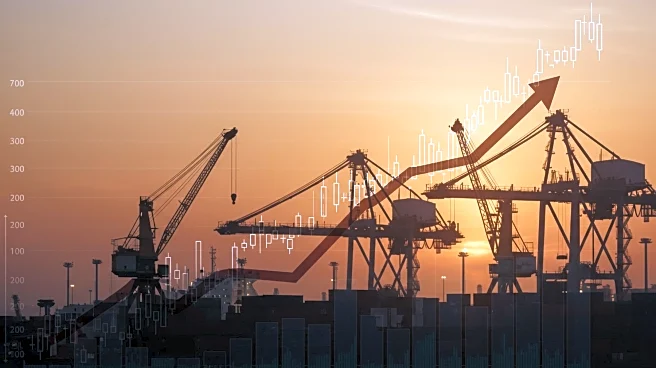Rapid Read • 8 min read
U.S. wholesale inflation experienced an unexpected surge last month, largely attributed to President Trump's comprehensive import tariffs. The Labor Department reported a 0.9% increase in the producer price index from June, marking the largest rise in over three years. Year-over-year, wholesale prices climbed by 3.3%. This increase suggests that U.S. importers are currently absorbing the costs of the tariffs rather than passing them onto consumers. However, experts warn that this situation may not persist, as producers could eventually transfer these higher costs to consumers. Core producer prices, excluding food and energy, also saw a significant rise of 0.9% from June, the largest since March 2022, and a 3.7% increase compared to the previous year.
AD
The surge in producer prices is a critical indicator of potential inflationary pressures on the U.S. economy. As businesses face higher costs due to tariffs, there is a likelihood that these will be passed onto consumers, leading to increased consumer prices. This development could impact consumer spending and economic growth, as higher prices may reduce purchasing power. The Federal Reserve's inflation target of 2% is already exceeded, with consumer prices rising by 2.7% last month. The situation underscores the broader economic implications of trade policies and their potential to affect both domestic and international markets.
Economists and policymakers will closely monitor the situation to assess the long-term impact of tariffs on inflation and consumer prices. Businesses may need to adjust their pricing strategies if tariffs continue to affect production costs. The Federal Reserve might consider policy adjustments if inflationary pressures persist, potentially influencing interest rates and monetary policy. Stakeholders, including businesses and consumers, will need to navigate these changes as they unfold.
The tariffs imposed by President Trump highlight the complex interplay between trade policies and economic indicators. While intended to protect domestic industries, these tariffs can lead to unintended consequences such as inflation and increased costs for consumers. The situation raises questions about the balance between protectionism and economic stability, and the long-term effects on global trade relations.
AD
More Stories You Might Enjoy










